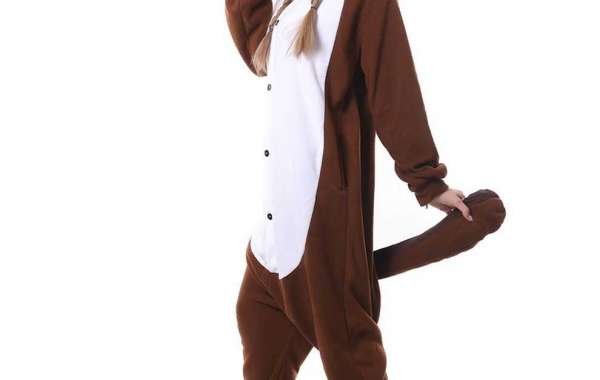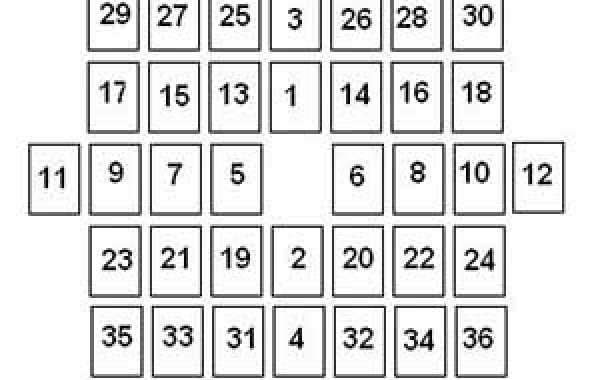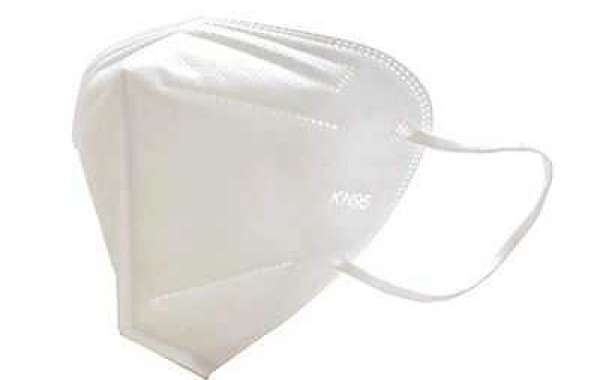Original title: Take stock of the new and high-tech materials in the medical protective suit! In the Spring Festival of Gengzi, the joint defense and control work of COVID-19 pandemic affects the hearts of hundreds of millions of people, and medical protective suit, a niche product, has attracted wide public attention. So, what materials are protective suit made of? How to play a protective role? ? Reusable: PTFE laminated fabric Medical protective suit is a broad concept, including all kinds of clothing worn by medical staff in the medical environment, such as daily work clothes, surgical gowns, isolation clothes and protective suit. Depending on the application environment and function, medical protective suit have different standard levels for liquid and bacterial infiltration, and the materials used are also different. However, according to the basic function, it can be roughly divided into two types: reusable type and disposable type (disposable). Reusable protective suit are generally used as daily work clothes and surgical clothes for medical staff. It is mainly made of traditional woven fabrics, high-density fabrics, coated fabrics and laminated fabrics. Because laminated fabric is made by laminating ordinary fabric and a special film through laminating process, it has become the mainstream choice in the industry because of its good protective performance and moisture and vapor permeability. High-end laminated fabrics are PTFE super waterproof and moisture-permeable composite fabrics. Polytetrafluoroethylene is used as the raw material to form a microporous film after expansion and stretching, and the film is coated on various fabrics and substrates by a special process to become a novel filter material. Because the membrane has small aperture, uniform distribution and large porosity, the membrane can filter dust particles including bacteria while maintaining air circulation, thereby achieving the purposes of purification and ventilation. The laminated fabric is windproof, waterproof, breathable, moisture-permeable, and extremely comfortable. At present, most developed countries use polytetrafluoroethylene materials. The medical multifunctional protective suit with teflon compound film as isolation layer has durable physical and mechanical property of waterproof, water repellency, antibiosis, antistatic, flame retardancy and moisture permeability. It has good isolation performance for blood and virus (liquid or gas weight) under natural and pressure conditions, and the isolation (filtration) efficiency is more than 99%. Disposable protective suit: polyolefin fiber non-woven fabric The polypropylene plant of Yanchang Petroleum Yan'an Energy and Chemical Co., Ltd. has been converted to produce special non-woven products, providing medical protective suit raw materials. The ideal medical protective suit should be multifunctional, not only able to protect medical staff from toxic and harmful liquids, gases or infectious viruses and microorganisms, but also comfortable to wear,Medical Full Body Coverall, with barrier properties, but also breathable, antibacterial and anti-allergenic, not harmful to human health. In addition, the choice of protective suit fabrics should also consider the cost and environmental protection after waste. Expand the full text The reusable protective suit needs to be washed and disinfected after each use, which is inconvenient to operate, greatly limits its weaving structure, and its protective performance decreases after a period of use. In view of this, protective suit made of disposable non-woven (non-woven) materials are gradually used in the world. This kind of protective suit, after further anti-bacterial, anti-static and other treatments, has similar hand feeling and performance with traditional textiles, and its price is lower. Therefore,Virus Prevention Mask 3 Ply with Earloop, it is widely used in isolation clothing and protective suit in the medical field. At present, the three major fibers used in the production of non-woven fabrics in China are polypropylene, polyester and viscose fibers. Polypropylene accounts for the highest proportion, accounting for 62%. Generally speaking, polypropylene used in the production of non-woven fabrics mainly refers to high melt index polypropylene fiber materials. In recent years, the demand for polypropylene high melt index fiber materials has been affected by multiple favorable factors and is favored by the market. Manufacturing enterprises are also actively developing and expanding the polypropylene fiber market. Statistics show that the domestic output of polypropylene fiber in 2019 is about 1.7 million tons, an increase of 7.5% over 2018. Among them, the high melting index polypropylene fiber material is 950,000 tons, with a year-on-year increase of 15.8%; the medium melting index polypropylene fiber material 770000 tons, basically flat. Non-woven production processes mainly include spunbonding, spunlacing, flash evaporation, SMS composite materials and so on. Spunbonded non-woven fabrics mainly use chemical fiber spinning method to form polypropylene filament, and then use airflow or mechanical method to separate the filament into a web, which is very close to the traditional textiles in terms of hand feeling and performance; spunlaced non-woven fabrics The flash evaporation non-woven fabric is formed by spraying fiber webs of fibers such as terylene, nylon, polypropylene and the like through a high-pressure water column and high-speed water flow to enable the fibers in the fiber webs to move, rearrange and mutually knot so as to achieve the aim of solidifying the fibers into cloth. Polyolefin is used as the main raw material, and electrostatic devillication is adopted, so that the filaments rub against each other in the drawing process to form electrostatic devillication, which repel each other and maintain a single fiber state, and then the fibers are condensed into a web by an electrostatic device, and the web is formed by hot rolling; SMS composite non-woven fabric is a kind of non-woven fabric made by combining two or more non-woven webs with different properties through chemical, thermal or mechanical means, Medical Full Body Coverall ,free shipping disposable coverall, or by combining different web forming processes. At present, disposable protective suit are mostly made of composite non-woven fabrics made of polyethylene breathable films. Polyethylene breathable film was prepared by blending LDPE/LLDPE resin carrier with about 50% special calcium carbonate, extruding into film, and then directionally stretching to a certain ratio. As that polyethylene resin is a thermoplastic plastic material, the polyethylene resin can be stretch and crystallized unde certain conditions, the interface between the polymer and the calcium carbonate particles is peeled off dure stretching, winding pores or channels which are communicated with each other are formed around the calcium carbonate particles, and the pores and the channels endow the film with a ventilation (moisture) function, so that the environments on both sides of the film are communicated. Ensure seamless and pinhole-free: medical protective sealing strip Not only the materials of medical protective suit should be made of special chemical materials, but also the seams of clothing should be treated with professional rubber strips, so as to effectively prevent viruses from penetrating from the seams and meet the standard requirements of professional protection for medical staff. Generally speaking, all seams of the disposable protective suit are bonded by the non-woven fabric hot melt adhesive through ultrasonic waves, so that the protective suit is seamless and pinhole-free, the tensile resistance of the seams of the protective suit is enhanced, air leakage, water leakage and bacteria leakage at the seams are completely eliminated, and the wearing is comfortable. Recently, with the rapid increase of the demand for medical protective suit in China, the demand for sealing strips, one of the important materials in the medical protective suit, has increased greatly. According to Zhang Jinbo, general manager of Shaoguan Gaoxin Plastic Products Co., Ltd., their current output is 1.2 million meters per day, which can supply the sealing strips needed to make 150000 sets of protective suit. As far as he knows, at present, most of the sealing strips of medical protective suit in China are produced by this enterprise. Since the outbreak of the pneumonia epidemic caused by the new coronavirus, the demand for medical protective suit in China has increased sharply. As one of the important materials in the medical protective suit, the demand for sealing strips has increased greatly at the same time, and all employees of the company are making every effort to support the production of medical protective suit enterprises in Hubei Province and ensure the needs of personnel and materials at the front line of the epidemic. High-end representative: Tyvek material In recent years, the use of disposable medical products in the United States, Europe, Japan and other developed countries and regions has been showing a steady growth trend, and more achievements have been made in the development and application of fabrics. Among them, Tyvek material developed by DuPont Company is a representative product of flash evaporation non-woven fabric, which has a good prospect in the field of medical protection. DuPont TYVEK material is a very fine fiber made from high-density polyethylene by a flash evaporation process, with diameters ranging from 0.5 to 10 microns. Adopts heating and pressurizing for jointing, has a non-adhesive/non-directional filament structure, has high physical strength and chemical resistance stability, and has a spider web structure formed by superfine fibers. The strong and tough filament fiber ensures the strength, puncture resistance and low dust of the material, enables various sterilizing gases to permeate efficiently, has excellent microbial barrier property, and has biocompatibility. After testing, Tyvek material is soft, light and breathable, with a moisture permeability of 7154 G/m2 and a surface moisture resistance of grade 4. A Brief History of medical protective suit Development Medical staff in medical protective suit are being tested. It is generally believed that medical protective suit originated from surgical gowns. More than 100 years ago, doctors mostly wore a kind of black coat when performing operations, which is considered to be the earliest medical protective suit. At that time, the purpose of such doctors wearing protective suit was not to protect themselves from injury, but to protect their clothes from blood or secretions. Early protective suit materials are generally cotton, which has the ability to prevent bacterial penetration in dry state, but can not resist bacterial invasion in wet state. During World War II, in order to make the material of protective suit resistant to liquid entry and bacteria, the military department of the United States developed a high-density woven fabric treated with fluorocarbon and benzene compounds to enhance the waterproof performance of protective clothing. After the war, civilian hospitals began to use these fabrics as medical protective suit. Since the 1980s, human beings have had a deep understanding of blood-borne pathogens such as HIV, hepatitis B virus and hepatitis C virus, and have deeply realized that medical staff are at risk of infection in the process of treating patients, so they have begun to focus on the development of medical protective suit, which has made the protective clothing industry flourish. In 2003, in the process of fighting against the "Severe Acute Respiratory Syndrome (SARS)" epidemic, China fully realized the biological occupational hazards faced by medical staff. In the course of SARS epidemic, 5329 cases of SARS were reported in the mainland of China, of which 969 cases were medical staff, accounting for 18%, belonging to the high-risk population. As it is very common for medical staff to be infected through direct contact with patients in the course of treatment, nursing and transportation, there is even a rare phenomenon in which dozens of medical staff are infected in order to rescue a patient, which has shocked all sectors of the community. China began to develop medical protective suit in related fields. Brief summary With the outbreak of COVID-19 in 2020, the demand and supervision of medical non-woven fabrics in the world have greatly increased. What are the development prospects of medical non-woven fabrics in China and the world? What are the material and process requirements for innovation? How does the industry leader cope with the ever-changing market demand? The "2020 Medical Nonwovens Innovative Materials and Intelligent Solutions Forum" hosted by Lingao Consulting with the theme of "Green, Innovation and Development" will be held in Changzhou on June 19, 2020. The conference will discuss the innovative application and sustainable development of medical non-woven fabrics from the perspectives of macro-market situation, development direction and technological innovation. Promote the exchange of key contents such as green development, intelligent manufacturing, energy saving, environmental protection,Medical Quickly Delivery Antivirus Coverall, cost reduction and efficiency enhancement of non-woven industry. Disclaimer: This article comes from the field of functional membrane material innovation, and is only for readers' reference information. If there is infringement, please contact Xiaobian to delete it. Return to Sohu to see more Responsible Editor:. zjyuan-group.com
Buscar
entradas populares
-
 Blue Moon Bear Onesie Kigurumi Pajamas Animal Costume
Por best onesie
Blue Moon Bear Onesie Kigurumi Pajamas Animal Costume
Por best onesie -
 কোমর ব্যথা | কারণ ও চিকিৎসা সম্পর্কে জেনে নিন!
Por Admin
কোমর ব্যথা | কারণ ও চিকিৎসা সম্পর্কে জেনে নিন!
Por Admin -
 Losing Weight- Tips To Make It Easy-Lights Out CBD Gummies VS Ikaria Lean Belly Juice
Por drherry morking
Losing Weight- Tips To Make It Easy-Lights Out CBD Gummies VS Ikaria Lean Belly Juice
Por drherry morking -
 Zip 1st Studio Siberian Mouses Masha Masha And Girlfriends Wmv Book .epub Full vestry
Por Dyani Ohlson
Zip 1st Studio Siberian Mouses Masha Masha And Girlfriends Wmv Book .epub Full vestry
Por Dyani Ohlson -
 SATTAKING RESULT SHARE REWARDS
Por jai singh kauwar
SATTAKING RESULT SHARE REWARDS
Por jai singh kauwar


